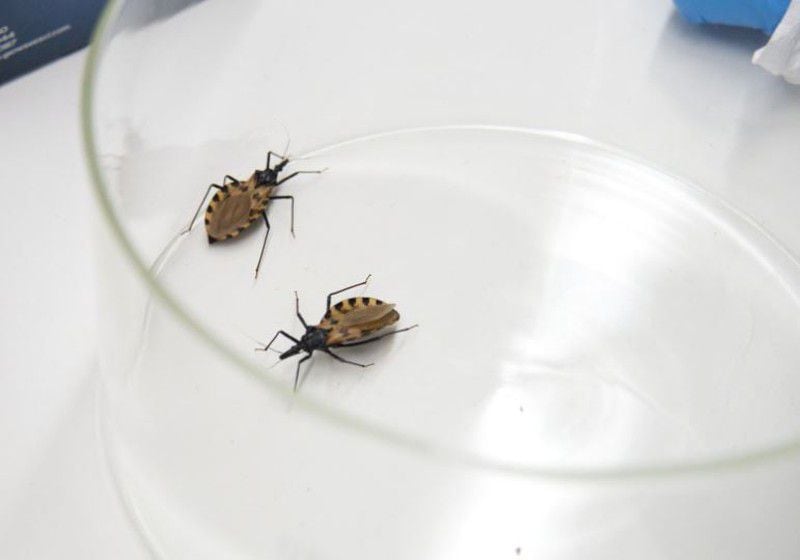There's nothing romantic about these kissing bugs.
The insects that spread Chagas disease (scientific name: Triatominae) got their sweet moniker by biting sleeping humans around their lips and faces, eventually defecating into the bite with feces containing the infectious parasite, Trypanasoma cruzi.
» RELATED: Never been a reported case of deadly 'kissing bug' disease in Georgia, CDC says
According to a new study published Thursday in the journal PLOS Neglected Tropical Diseases, Chagas could be more deadly than scientists previously thought due to underreporting.
After studying more than 8,000 Brazilians who donated blood from 1996 to 2000, researchers at the University of Sao Paulo in Brazil found 2,842 of the donors tested positive for Chagas when they donated their blood — 5,684 participants tested negative.
"In every age category, people who had Chagas died more than people who didn't have Chagas," lead researcher Dr. Ligia Capuani said.
Study investigator Dr. Ester Cerdeira Sabino also said people with Chagas had a two to three times higher risk of dying, with the most common cause of death being heart-related diseases.
If the disease isn’t treated early on, the risk of fatality is significant, researchers said.
"Chagas is often mistaken with flu symptoms and then disappears. It can disappear for years then re-emerge as heart disease," Dr. Alvaro Acosta-Serrano, a parasitologist at the Liverpool School of Tropical Medicine in the UK, told CNN.
“If we don't detect it in time, they will continue spreading the disease,” he said.
The Atlanta-based Centers for Disease Control and Prevention considers Chagas Disease one of the five neglected parasitic infections that require public health action based on records of its severity and widespread infection.
According to the CDC, an estimated 8 million people throughout Mexico, Central America and South America are infected.
In these areas, diagnosis can be quite a challenge, with people often finding out they are infected only when they donate blood, CNN reported.
» RELATED: 5 things to know about the deadly 'kissing bug' and Chagas disease
More than 300,000 people with the infection — most of whom contracted the disease in other countries — live in the U.S, according to the CDC.
While a majority of those affected are symptom-free in the first couple months after the infection, some may experience fever, diarrhea, fatigue and others.
In addition to obtaining the infection through kissing bugs, infections can also occur through congenital transmission, contaminated blood products, infected donor in organ transplant, lab accident and, rarely, contaminated food or beverages, according to the CDC.
There is no effective vaccine against the disease yet.







